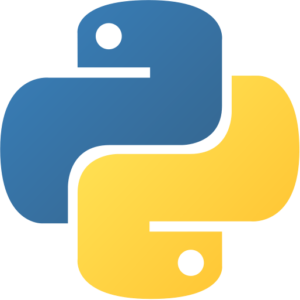Polyglot VM by Anarion Technologies
Polyglot is an innovative language detection tool designed to empower developers by enabling them to identify and process multiple programming languages within a single codebase. In today’s diverse development landscape, where applications often utilize various languages for different components, the ability to seamlessly integrate these languages becomes essential. Polyglot addresses this need by providing a robust framework for language detection, allowing developers to efficiently manage and work with multilingual codebases.
One of the standout features of Polyglot is its advanced algorithms, which are capable of accurately recognizing a wide range of programming languages. This precision not only streamlines the development process but also enhances code quality by ensuring that developers can easily navigate and understand the code written in different languages. As a result, Polyglot fosters better collaboration among team members who may have expertise in different programming languages, promoting a more inclusive and effective development environment.
Additionally, Polyglot offers a user-friendly interface that simplifies the integration of various languages within a single project. Developers can leverage its features to facilitate interoperability between languages, allowing them to build complex applications without the overhead of managing multiple tools or services. By providing comprehensive support for language detection, Polyglot ultimately enhances productivity, reduces errors, and accelerates the development cycle, making it an invaluable resource for modern software development teams.
To subscribe to this product from Azure Marketplace and initiate an instance using the Azure compute service, follow these steps:
1. Navigate to Azure Marketplace and subscribe to the desired product.
2. Search for “virtual machines” and select “Virtual machines” under Services.
3. Click on “Add” in the Virtual machines page, which will lead you to the Create a virtual machine page.
4. In the Basics tab:
- Ensure the correct subscription is chosen under Project details.
- Opt for creating a new resource group by selecting “Create new resource group” and name it as “myResourceGroup.”
5. Under Instance details:
- Enter “myVM” as the Virtual machine name.
- Choose “East US” as the Region.
- Select “Ubuntu 18.04 LTS” as the Image.
- Leave other settings as default.
6. For Administrator account:
- Pick “SSH public key.”
- Provide your user name and paste your public key, ensuring no leading or trailing white spaces.
7. Under Inbound port rules > Public inbound ports:
- Choose “Allow selected ports.”
- Select “SSH (22)” and “HTTP (80)” from the drop-down.
8. Keep the remaining settings at their defaults and click on “Review + create” at the bottom of the page.
9. The “Create a virtual machine” page will display the details of the VM you’re about to create. Once ready, click on “Create.”
10. The deployment process will take a few minutes. Once it’s finished, proceed to the next section.
To connect to the virtual machine:
1. Access the overview page of your VM and click on “Connect.”
2. On the “Connect to virtual machine” page:
- Keep the default options for connecting via IP address over port 22.
- A connection command for logging in will be displayed. Click the button to copy the command. Here’s an example of what the SSH connection command looks like:
“`
ssh [email protected]
“`
3. Using the same bash shell that you used to generate your SSH key pair, you can either reopen the Cloud Shell by selecting >_ again
or going to https://shell.azure.com/bash.
4. Paste the SSH connection command into the shell to initiate an SSH session.
Usage/Deployment Instructions
Anarion Technologies – Polyglot
Note: Search product on Azure marketplace and click on “Get it now”
Click on Continue
Click on Create
Creating a Virtual Machine, enter or select appropriate values for zone, machine type, resource group and so on as per your choice.
After Process of Create Virtual Machine. You have got an Option Go to Resource Group
Click Go to Resource Group
Copy the Public IP Address
SSH into Terminal and Run these following Commands:
$ sudo su
$ sudo apt update
To check Polyglot Version :
$ pip show polyglot
Run a Test Script:
Create and run this Python script to detect the language of a sentence:
Save this script in a file, for example, polyglot_test.py.
Run the script using Python:
$ python3 polyglot_test.py
ThankYou!!!



